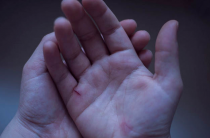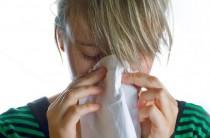An allergy of any type is considered a reaction of the body, which appears due to the fact that the immune system fails. It reacts to safe substances as very dangerous allergens and develops antibodies to them. People who are prone to allergies react to several substances at once, and therefore a chain reaction becomes noticeable.
A large number of allergic diseases have manifestations on the skin, they are equated in number to a disease such as bronchial asthma.
Causes of skin allergies
Contribute to the appearance of allergic symptoms on the skin such plants as:
- tulip;
- narcissus;
- lily of the valley;
- geranium and others.
Skin allergies can be caused by the use of the following products:
- honey;
- strawberries;
- yogurt;
- chips;
- hamburgers.
Also, it is worth remembering that medicines, cosmetics, hygiene products, household chemicals, clothes, cheap jewelry, ultraviolet radiation, cold air are common allergens. Allergies can be caused by psychosomatic causes: resentment against someone, depression, quarrel, nervous breakdowns.
It is impossible to cure neurodermatitis at the level of genetics, but if the necessary preventive measures and treatment procedures are applied, it will become possible to forget about such a problem.
Types of allergic reactions on the skin
The development of urticaria occurs immediately after the human body has come into contact with the allergen. It can develop very quickly and take the form of red swelling, blisters, rashes on such areas of the skin as the back, legs, face, neck, hands. Plaques form on top of the blisters, which are the result of swelling of the skin. Urticaria can be provoked by insect poison, contact with jellyfish, nettle.
It can also be provoked by a genetic predisposition to drugs, food, sudden changes in temperature. Food allergens include:
- chocolate;
- berries;
- red fruits;
- chicken eggs;
- mushrooms;
- dairy products;
- products with a high content of preservatives and dyes.
Cold dermatitis can occur due to a sudden change in temperature. When it occurs, the skin is covered with spots, there is severe itching, excessive dryness of the skin. Manifestations of urticaria on the face are less common than on the body, except for cold allergies, which are noticeable on the face.
This type of dermatitis affects precisely those areas of the skin that are in direct contact with allergens. It is caused by contact with various cosmetics, household chemicals, and some metals. This type of rash does not manifest itself immediately, but after a long period of time. The damaged area of the body is very itchy, reddens, bubbles filled with liquid appear on it. The latter burst from combing and transform into a dry crust, on which cracks later form.
Allergy on the scalp or allergic contact dermatitis occurs due to contact of the head with allergens that are contained in hair dyes, shampoos. It is very important to see the difference between allergies from psoriasis and seborrhea, which are also characterized by skin peeling. This allergic reaction can cause hair loss.
Allergic dermatitis also appears around the eyes due to the use of cosmetics or hygiene products of inadequate quality. An unbalanced diet, solar radiation can also cause allergies. Due to the use of certain medications, the thin and very sensitive skin around the eyes may begin to peel, swell, itch, in addition, conjunctivitis and severe tearing may occur.
Any allergic person and his family should know for sure what his disease looks like, and if the first signs appear, immediately take the necessary measures. Types of skin allergies include:
- Acute urticaria. This disease got its name because of the great similarity with a nettle burn. The main symptom is a rash that does not go away for several months. Provoke such a reaction of the body can drugs, an overdose of them, food, insect poison.
- Chronic urticaria. Establishing the causes of such a disease is difficult, and sometimes impossible. An allergic rash is present on the body for about a month and a half, it is supplemented by Quincke's edema.
- Physical hives. It is caused by physical factors: frequent sweating, cold wind, heat, frost, ultraviolet radiation. This disease develops very quickly. When weather conditions trigger an allergy, the symptoms persist throughout the entire period of time.
- Dermatographism. It is the result of scratching. It is supplemented by any form of urticaria.
- Atopic dermatitis. It affects the whole body. In this case, the skin becomes very inflamed. I consider erythroderma to be the most severe form of this disease.
- contact dermatitis. Allergy is manifested due to the contact of the skin with various allergens - substances and objects. Symptoms remain for a period of a couple of weeks to a couple of months.
Most often, drug allergy appears in the form of a measles-like rash, urticaria, angioedema, allergic vasculitis, and allergic contact dermatitis.
Measles rash is a maculopapular rash that is located on the trunk, in the form of single or massive foci. If the disease progresses, the patient develops Stevens-Johnson syndrome and toxic epidermal necrolysis, serum sickness. After taking the medicine for 7-10 days, the first symptoms of the disease appear. The cause of measles-like rashes is the use of penicillins, sulfonamides, NSAIDs, anticonvulsants.
Urticaria and angioedema is considered the only manifestation of drug hypersensitivity, which develops additionally with a systemic allergic reaction, anaphylaxis, and serum sickness.
The blisters that occur in this case can be either single or multiple. Urticarial rash is completely irreversible. In half of the cases, urticaria appears along with angioedema.
The mechanism of development of urticaria is very similar to angioedema, they can be caused by various drugs, non-allergic substances, radiopaque agents, vitamin B, narcotic analgesic, penicillin, and other antibiotics.
Skin allergy symptoms
For each individual, the symptoms appear individually, they can be acute or gradual.
The first signs of an allergy are:
- dry skin;
- swelling in damaged areas of the skin;
- skin rashes;
- severe itching, spots on the body.
Rashes can occur on various parts of the skin: on the neck, face, inguinal folds, in the mouth, in the nasal cavity. They look like nodules of pale red color, which can be localized separately or combined into foci.
A person with skin allergies constantly experiences uncomfortable sensations: he strongly wants to itch, comb problem areas, which can later lead to infection. For infants, the symptoms of a skin allergy are as follows: severe itching, inflamed areas of the skin that burn and bake, thereby provoking a rise in body temperature.
Since the reaction is a response to the influence of a particular allergen, or a whole group of them, the ultimate goal of diagnosis is the detection of allergenic substances. This step will allow you to learn how to properly treat allergies. The study is carried out as follows:
- the patient is carefully examined;
- study history;
- interview relatives who also suffer from allergies;
- after passing the tests, the patient's diagnosis is confirmed or refuted.
Diagnosis of angioedema
Angioedema, which is caused by medication, can be located on various parts of the body. It is very often localized on the lips and eyelids, it is especially dangerous when it appears on the larynx, tongue. When feeling, you can determine its clear forms, boundaries. It can be supplemented by urticaria, pruritus.
First of all, in order to make a differential diagnosis, they find out the cause of the appearance of angioedema, which may be a violation in the complement system. Such failures can be caused by both congenital and acquired features.
Their symptoms can manifest as edema of the gastrointestinal tract, skin, urogenital tract, respiratory tract. The following reactions can provoke such reactions:
- hypothermia;
- trauma;
- emotional stress;
- physical exercise.
Allergic vasculitis is characterized by petechial symmetrical rashes, the locations of which are the shins, ankles, buttocks, hands. The face and neck are not subject to rashes. When rashes persist for a long period of time, age spots form in their place. Provoke allergic vasculitis drugs such as sulfonamides, barbiturates, gold salts, iodine preparations.
Provoke contact allergic dermatitis can also be taking a drug, mainly antibacterial action (neomycin, chloramphenicol, penicillin, sulfonamides), ethylenediamine derivatives. The clinical manifestations of such a disease are erythema, edema, vesicles, bullae at the site of influence of drugs. In some cases, allergic contact dermatitis is accompanied by the spread of inflammation to the skin that has not been in contact with the allergen.
A fixed allergy can be distinguished by rashes that appear on the same area of the skin after each new use of the drug. Such allergic reactions occur due to exposure to barbiturates, sulfonamides, phenolphthaleins, tetracyclines, they have clear boundaries and various sizes.
Symptoms of fixed erythema
Depending on the nature of the rash, which can be erythematous, edematous plaques, bullous with consequences such as chronic post-inflammatory pigmentation. The rash appears after a few hours have passed after taking the medicine. Pigmentation remains for several months, or even years. Treatment of fixed erythema is similar to the treatment of other diseases of an allergic nature.
Photodermatitis develops when the human body is exposed to solar radiation, drugs. Its characteristic feature is a rash on areas of the body that were under direct sunlight. Able to cause such reactions are quinolone, tetracycline, amiodarone, non-steroidal anti-inflammatory drugs.
Phototoxic reactions are quite common. They arise due to the fact that ultraviolet rays change the structure of drugs with the active creation of metabolites. They, in turn, combine with skin proteins, form a full-fledged active antigen that induces cell-mediated immunity. In order for the body to manifest photoallergic reactions, it is necessary that the process of sensitization immediately go through.
Allergy treatment
To quickly remove the symptoms of an allergy, it is worth eliminating its contact with the allergen. It is possible to act in this way only when the allergen is precisely defined. In some cases, a cool shower is enough (for pollinosis), taking an antihistamine (for most allergic manifestations). The way out of the situation with hay fever is to temporarily move to another place.
Only a doctor should treat allergies. He develops an individual treatment regimen for each individual patient, which includes:
- Treatment of symptoms. It is able to eliminate the main symptoms of allergies by applying compresses, most often saline. Solutions are absorbed into the blood capillaries, and contribute to their narrowing. The result of this procedure is a short-term reduction in itching.
- Allergy tablets. They are used depending on how severe the disease is. These drugs can be both traditional and new generation (Diazolin, Dimedrol, Tavegil, Suprastin).
- Corticosteroids. They are prescribed only when the patient has a very severe form of the disease. They can only be taken according to a certain scheme (Prednisolone, Hydrocortisone).
- Cream and ointment. They are designed to relieve itching, eliminate burning and redness. For children, Fenistil-gel is best suited, for adults - Bepanten, Epidel.
In addition to the above drugs, immunomodulators are used, which are systemic and local. Their main task is to strengthen the body's immune system. Local immunomodulators include a non-hormonal cream and ointment, which are necessary in order to protect the skin from the influence of allergenic substances on the street.
A hypoallergenic diet is also very effective. It is considered almost the only method of eliminating allergies in infants.
do not necessarily have skin allergies Such reactions can also occur in a healthy person whose immune system is now weakened. After all, with a decrease in immune defense, the risk of allergies increases at times. Therefore, the best way to protect yourself from allergies is prevention.
In total there are three types of antihistamines: first, second and third generations. They are able to quickly eliminate the manifestations of allergies by stopping the effects of histamine on the body, and blocking its receptors in tissues and blood.
Cromones are called anti-inflammatory drugs that are taken to prevent allergic diseases. The principle of their action is that they help strengthen the walls of mast cells, which provide immune protection. If their shell is destroyed, histamine enters the blood and allergic reactions begin to appear. The stabilizer prevents this from happening. In order to get a lasting effect, a person must take such drugs for a long period of time. They are often used to eliminate asthma, atopic dermatitis.
Corticosteroid hormones are hormones of natural origin or synthetically produced. As indicated, they eliminate symptoms in severe forms of allergies, severe swelling. They are available as tablets, injections, or ointments. You can not start taking these drugs on your own without consulting a doctor. If you use them regularly, the body will get used to it, and therefore, stronger drugs will need to be used each time to eliminate the symptoms.
Special attention deserves the topic of treatment of allergies during pregnancy. It is possible to determine the presence of an allergy only by a blood test, so skin tests in this case do not provide complete information. It is possible to use hormonal drugs in such cases only of a certain type, carefully reading the instructions before use. If there is an urgent need to take them, you can take a third-generation antihistamine in a minimal amount. The best option for treating allergies during pregnancy is to minimize contact with the allergen, or completely eliminate it from your life.
Herbal infusions for skin allergies
In order to improve the condition of the skin, folk remedies are used. In order to make a compress for the skin around the eyes, a decoction of chamomile or cucumber juice is used. You can treat the scalp with shampoos and masks that contain zinc, tar. Herbal infusions of calendula, chamomile, St. John's wort have an anti-inflammatory effect.
Combining pharmaceutical drugs and traditional medicine, you can achieve excellent results.
So children can be helped by baths with a decoction of bay leaves. In order for the healing to be quick, an ointment containing zinc is applied to the affected areas. To dry the skin with weeping, a series, St. John's wort, calendula, chamomile, wild rosemary, nine strengths are added to the baths.
Cabbage brine, which is applied every day to reddened skin, will help eliminate itching. Celery juice will help get rid of allergic urticaria.
To completely recover from allergies, it is worth taking an infusion of a succession instead of tea and coffee. Its color should be golden, without a greenish tint and cloudy sediment. It is best for such purposes to take grass not in a pharmacy, but to collect it yourself.
When an allergy has not been treated for a long time, Ivan da Marya tincture can help out. It heals wounds and soothes the skin.
Allergy treatment should be systemic. Since the origin of allergies most often remains unclear, it is imperative to contact a doctor (dermatologist, immunologist) to prescribe the necessary medication.
Preventive actions
1. Remove air conditioners in the living room;
2. Do not get pets, or if you already have them, give them to caring hands;
3. Buy only those food products that have low allergenic qualities;
4. Regularly carry out wet cleaning;
5. Apply hardening;
6. Annually improve your health in a sanatorium.
For more information about skin allergies, please contact our consultant.















